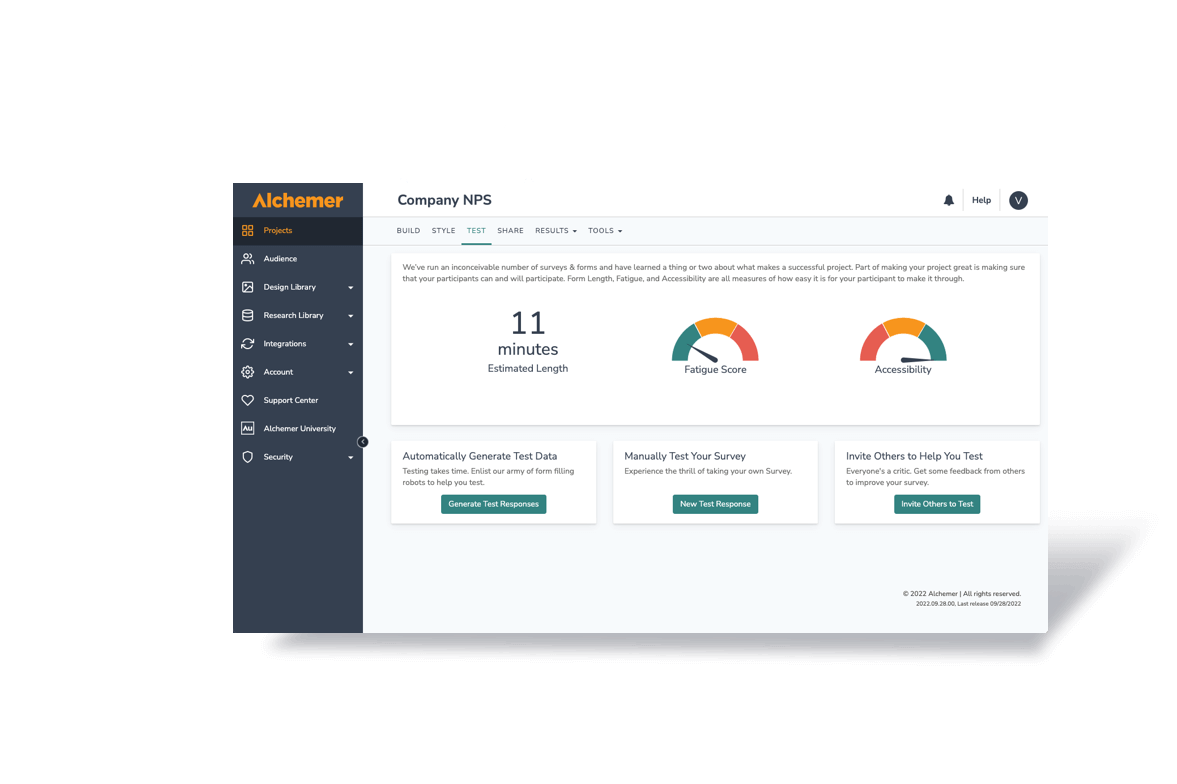While it’s easy to deem yourself as a ‘survey-savvy’ market researcher, it’s always a good idea to revisit or take a closer look at the language used in the field of data collection and analysis, so that you can maintain confidence that you are communicating as effectively as possible.
Below we’ve compiled a list of essential terminology for market researchers. If you consider yourself survey-savvy, then this is must-know jargon.
If after reading through this list none of the terms caught you by surprise, then congratulations! You are indeed a survey-savvy market researcher!
20 Terms All Survey-Savvy Market Researchers Should Know
#1: Survey
A survey is a data collection tool that includes at least one question. You can ask these questions, which can be open-ended or close-ended, in either written or oral format.
You can think of it as the entire research project or a ‘point-in-time’ data collection method.
#2: QRE
QRE is simply an abbreviation of, or shorthand for questionnaire.
#3: Multi-Modal
A multi-modal approach uses a variety of distribution methods. For example, you might administer it via email, send it as a letter through the mail, or have someone distribute it on a street corner.
#4: Participants
Participants are the people that a researcher invites to be a part of their study, or to complete their questionnaire.
#5: Respondents
Respondents are the participants in a study that actually respond to the survey or questionnaire.
#6: Dropouts
Dropouts are the respondents in a study that stop answering questions in a survey, instead of completing the survey in its entirety.
#7: Completes
Completes are the responses that have fully completed all aspects of the questions in a survey.
#8: Incompletes
Incompletes are the responses that have NOT fully completed all aspects of the questions in a survey.
These incompletes can come from respondents who have failed to click the final ‘Submit’ button that resides at the end of a survey.
#9: Response Rate
The response rate is the percentage of completed questionnaires.
#10: Open-Ended Questions
Open-ended questions (AKA open-ends) are questions in a survey that require the respondent to provide commentary.
#11: Close-Ended Questions
Close-ended questions (AKA close-ends) are questions in a survey that require the respondent to choose from a list of available responses, such as a multiple choice question.
#12: Mean
The mean is the average value in a dataset.
#13: Median
The median is the center value in a dataset.
#14: Mode
The mode represents the most frequent value in a dataset.
#15: Quantitative
Quantitative methods refer to methods that leverage numerical data. Although survey responses often do not come in quantitative form, you can code them systematically to convert them into quantitative data.
#16: Qualitative
Qualitative methods refer to methods that leverage non-numerical data. For example, if someone is dealing with the raw responses of an open-ended questionnaire, they would perform a qualitative analysis of the response data.
#17: Logic
Logic is a tool that displays specific survey questions to certain respondents based on their previous answers. Logic combats survey fatigue by only displaying questions that are directly applicable to individual respondents. As a result, the quality of the data is higher.
#18: Fielding
Fielding is the actual process of administering a survey in order to gather responses.
#19: Population
A population is the target group of people that the researcher is investigating. Here, population refers to the entire group under examination. A market researcher would then pull a statistically significant sample from the population to actually administer the survey to.
#20: Sample
A sample is the representative group selected from the larger population of interest.
So… How did you do?
If you know all the definitions of the terms listed above, consider yourself a survey-savvy market researcher!
Do you have more market research terms you wish we included in this list? If so, we’d love to hear from you! Reach out to us in the comments below, and we’ll continue to add to this list.



